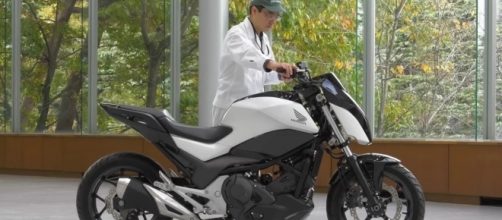Japanese manufacturer #Honda has unveiled self-balancing technology for the motorcycle that could keep the bike upright, called Riding Assist. It is achieved essentially by making tiny adjustments to its front wheel, and then moving the front wheel back and forth, to keep the bike balanced.
According to reports, Honda has developed Riding Assist technology that allows the motorcycle to balance itself in slow speeds without the use of gyroscopes. The Honda Riding technology, which is still in the prototype stage, is said to reduce the number of road accidents in slow-moving traffic.
Honda’s Riding Assist technology was developed as an offshoot of the Uni-Cub, the automaker's self-balancing mobility unicycle concept. At the company's presentation at #2017 CES, the big tech trade show in Las Vegas, Honda unveiled the self-balancing technology by showing a motorcycle slowly wheel itself onstage.
How Honda self-balancing technology works
The Honda Riding Assist technology, which leverages the company’s robotics technology, uses minute steering inputs to keep the bike perfectly balanced, without the use of heavy gyroscopes or other mass-shifting devices. It uses the same balancing technology that’s been used in the popular Uni-Cub electric mobility scooter and Asimo robot, which were developed at Honda’s Silicon Valley R&D center.
To balance the bike, the Honda system increases the fork angle of the front suspension, lengthening the bike’s wheelbase and disconnecting the front forks from the handlebars. Honda has made some clever things with this. It uses an electronic steer-by-wire system that engages at speeds below 3 mph, and then passes the control of the front wheel to the bike’s computer.
The bike senses lean angles and adjusts the angles of the front forks, this lowers the bike’s center of gravity to improve stability and balance the bike. In addition to the self-balancing ability, Honda has also demonstrated that the tech can even silently propel itself along, just like a dog following its owner through a hallway.
This hints at something big in the future, suggesting that there is also space for autonomous technology.
Honda's other competitors in the market
This is not the first time such self-balancing technology has been introduced to the public. Companies like Murata Manufacturing of Japan have already rolled out this kind of technology using small two-wheeled robots that can balance, however, that technology relies mostly on gyroscopes. In contrast, Honda’s Riding Assist technology doesn’t rely on gyroscopes, which makes it far more advanced than any other self-balancing technology on the market.
BMW Motorrad also unveiled its self-balancing technology last year with its Vision Next 100 Concept bike.
But unlike BMW Motorrad's futuristic-looking bike, Honda's self-balancing motorcycle is more in line with the current design trend, which makes it more suitable. In fact, the bike that Honda revealed at 2017 CES event looks very much like a production bike.
Unfortunately, the company hasn't announced any plans of getting the Riding Assist technology into the current Honda lines. Honda declined to comment on this.

